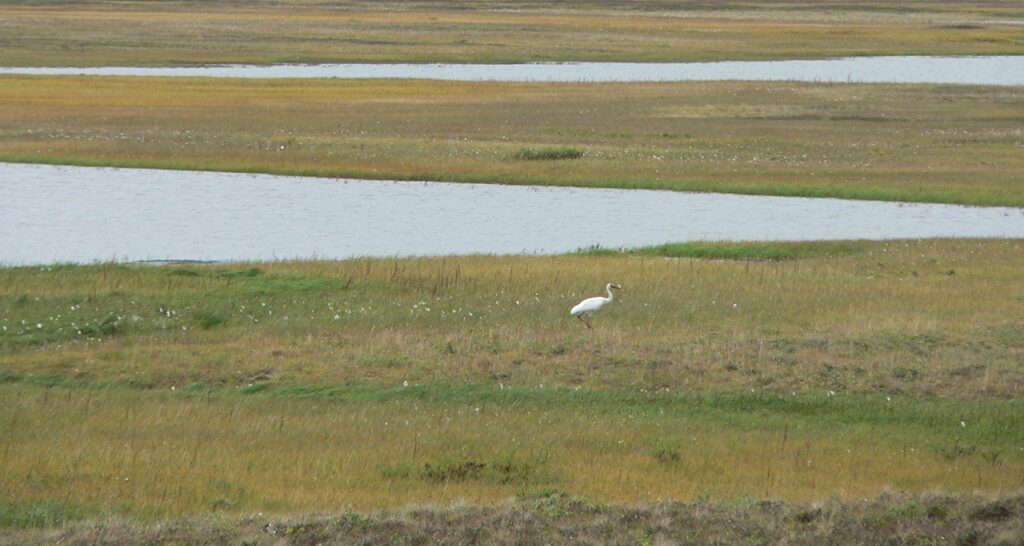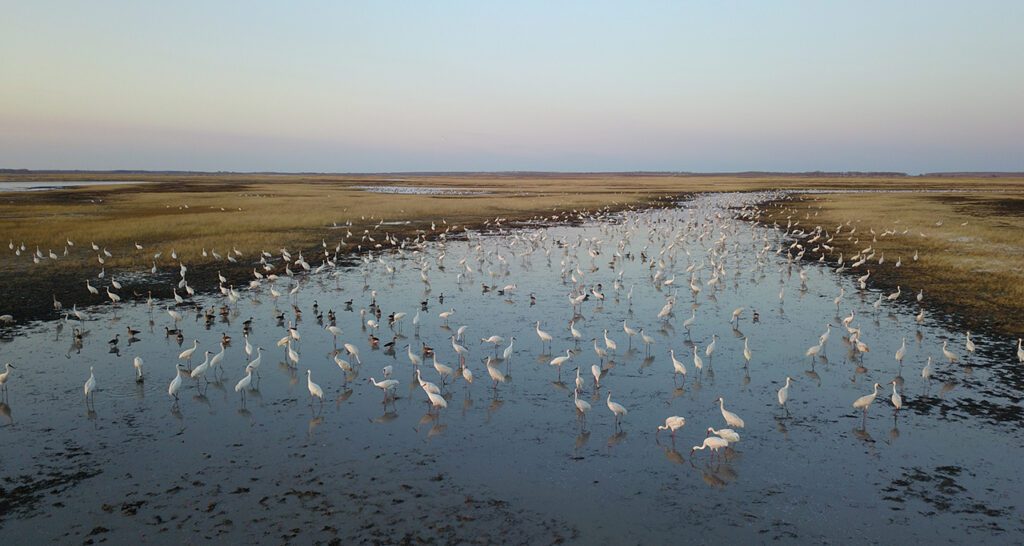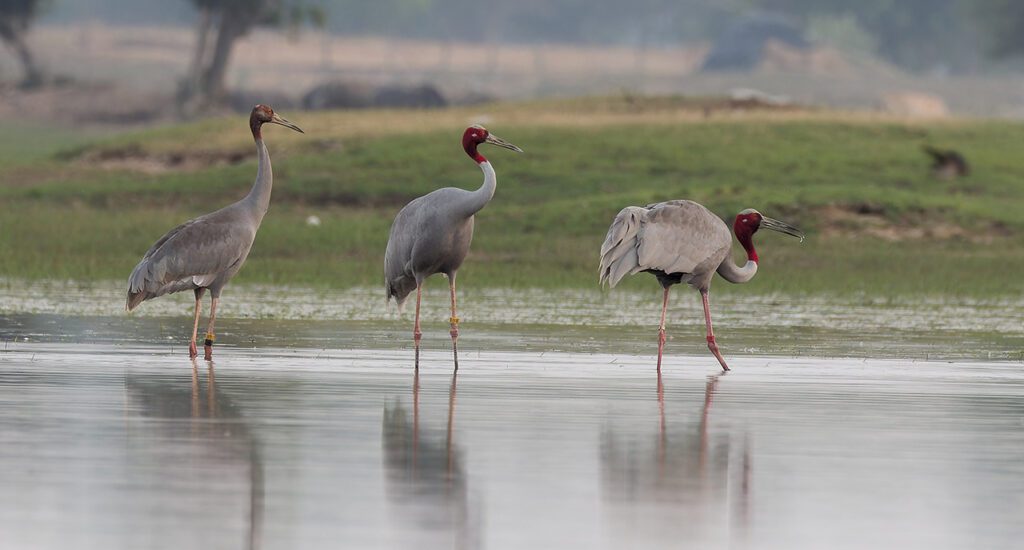A new milestone for the Black-necked Crane Conservation Network in China
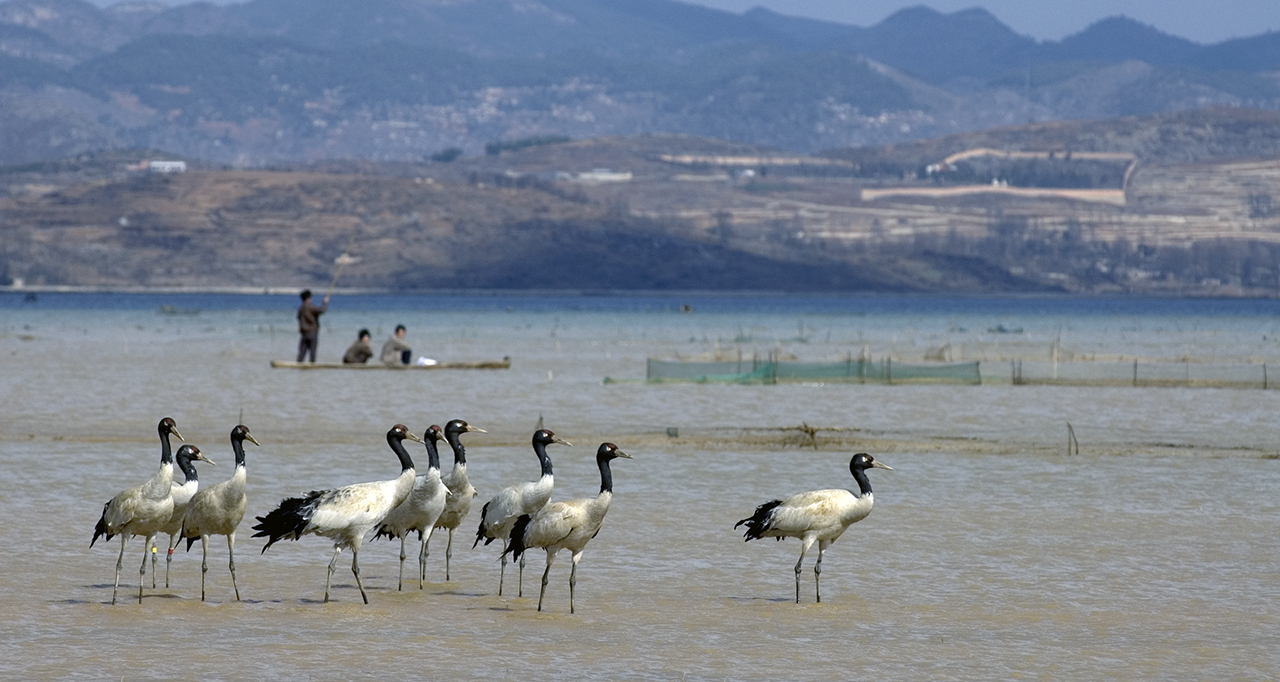
Photo: Black-necked Cranes forage near fishermen at Cao Hai National Nature Reserve, China. Zhou Qiuliang
Over 100 researchers and conservationists met late last year at Huize National Nature Reserve in Yunnan Province, China, for the ninth annual Black-necked Crane Conservation Network meeting. The International Crane Foundation, Kunming Institute of Zoology of the Chinese Academy of Sciences, and Huize National Nature Reserve organized the meeting on Dec. 14-15, 2024. The participants represented 30 research and conservation organizations from China’s Black-necked Crane range provinces. At the opening ceremony, Director Ding Dongping of Huize County Government, Director Zhang Qinyong of the Forestry Department of Qujing Prefecture (where Huize County is located), Director Qian Fawen of the China National Bird Banding Center, and Dr. Mahendra Shrestha, the International Crane Foundation’s Vice President – Asia Programs, delivered opening remarks. In addition, colleagues working on Black-necked Cranes from Bhutan, India, USA, and Germany sent their virtual greetings to the meeting.
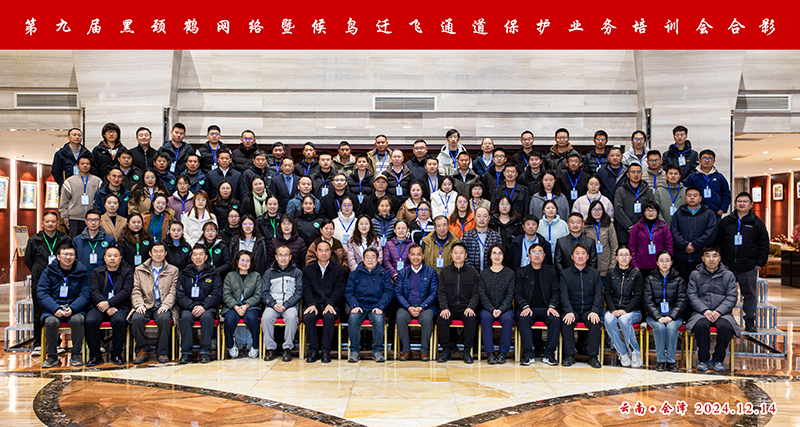
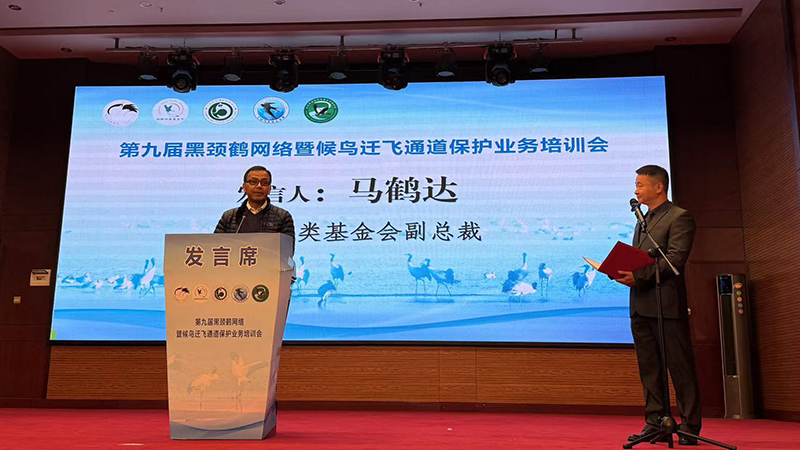
The Black-necked Crane Conservation Network was established in 2012 to protect the species and their habitats along their flyways. It serves as a platform for exchange and cooperation among key sites and conservation communities and for sharing research results and best practices. The network ran smoothly until 2020, when the Covid-19 pandemic broke out. Subsequently, an annual network meeting was held in February 2023.
The 2024 meeting was held at a crucial time to look at emerging challenges. Today, the impacts of climate change, rapid urbanization, and other human activities are concerning, which pose unprecedented threats to Black-necked Cranes and the high-altitude plateau habitats. In addition, the rising threat of powerline collision is alarming. It is important, therefore, to strengthen communication and collaboration among key stakeholders and sites along the flyway for timely evaluation and threat mitigation actions. The flyway approach is vital to ensure habitat and migration corridor conservation, building on the International Crane Foundation’s flyway work and learning experiences such as from the East Asia-Australasia Flyway Partnership. During the meeting, leading experts and core staff from the conservation community and nature reserves presented their work. The themes were wide-ranging and multi-disciplinary, including research and conservation reviews; ecology, migration, habitats, and threats; application of new tools and technology; and nature education and community development.
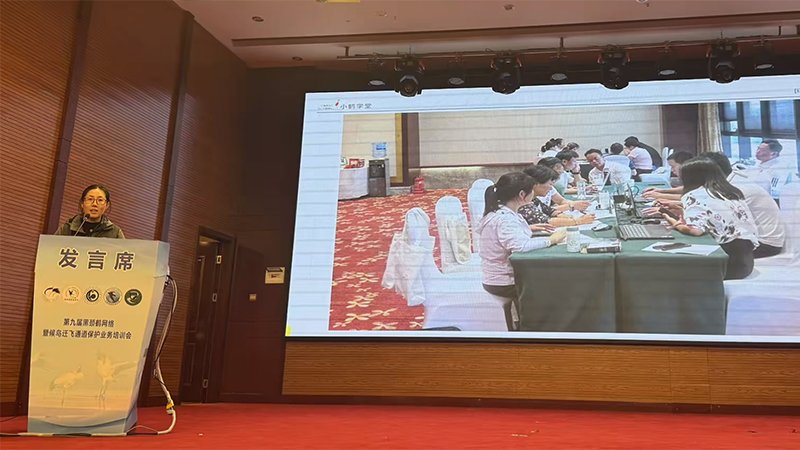
A highlight of the meeting was the transition to the new leadership of the network. By 2024, the three founder members of the Black-necked Crane Conservation Network, including Dr. Li Fengshan from the International Crane Foundation, Prof. Yang Xiaojun from the Kunming Institute of Zoology, and Dr. Qian Fawen from the National Bird Banding Center, had all retired from their organizations after 13 years of leading the network. A new working group consisting of nine members was formed to lead the network. They are from the International Crane Foundation, Kunming Institute of Zoology, National Bird Banding Center, Guizhou University, Lanzhou University, Yunnan University, and Southwest Forestry University, most of whom have been involved in the network previously.
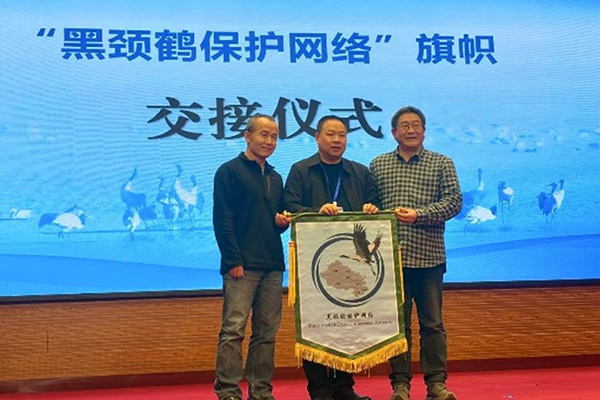
The next annual meeting of the Black-necked Crane Conservation Network will be held in 2026 at Longbaotan National Nature Reserve in Qinghai Province. We are confident that the network will continue to play a pivotal role for Black-necked Crane conservation in China, benefiting the Central Asia Flyway.
The Network also promotes science-oriented conservation publications. China Crane News was a newsletter initiated in 1997 by the Chinese Ornithological Society under the sponsorship of the International Crane Foundation. The newsletter is currently run by the Chinese Ornithological Society and China United Crane Conservation Committee. It has a special column dedicated to the Black-necked Crane Conservation Network. In the most recent issue, 10 out of 32 research and conservation articles are in the column, indicating that the network remains a strong force in crane research and conservation communities in China.
